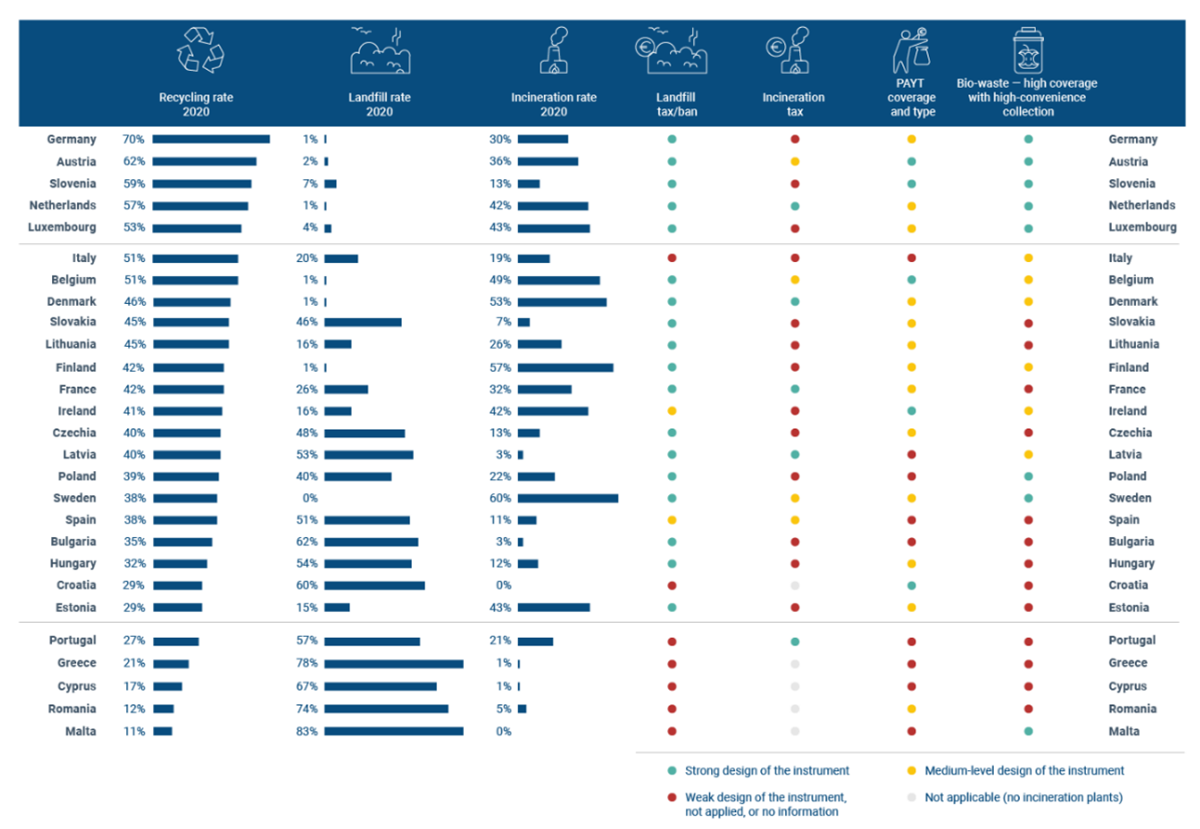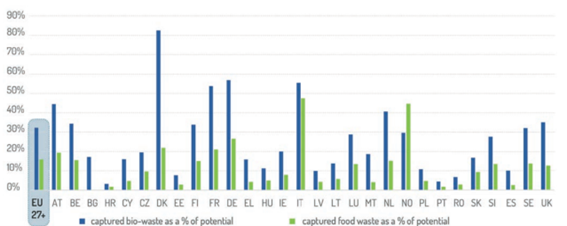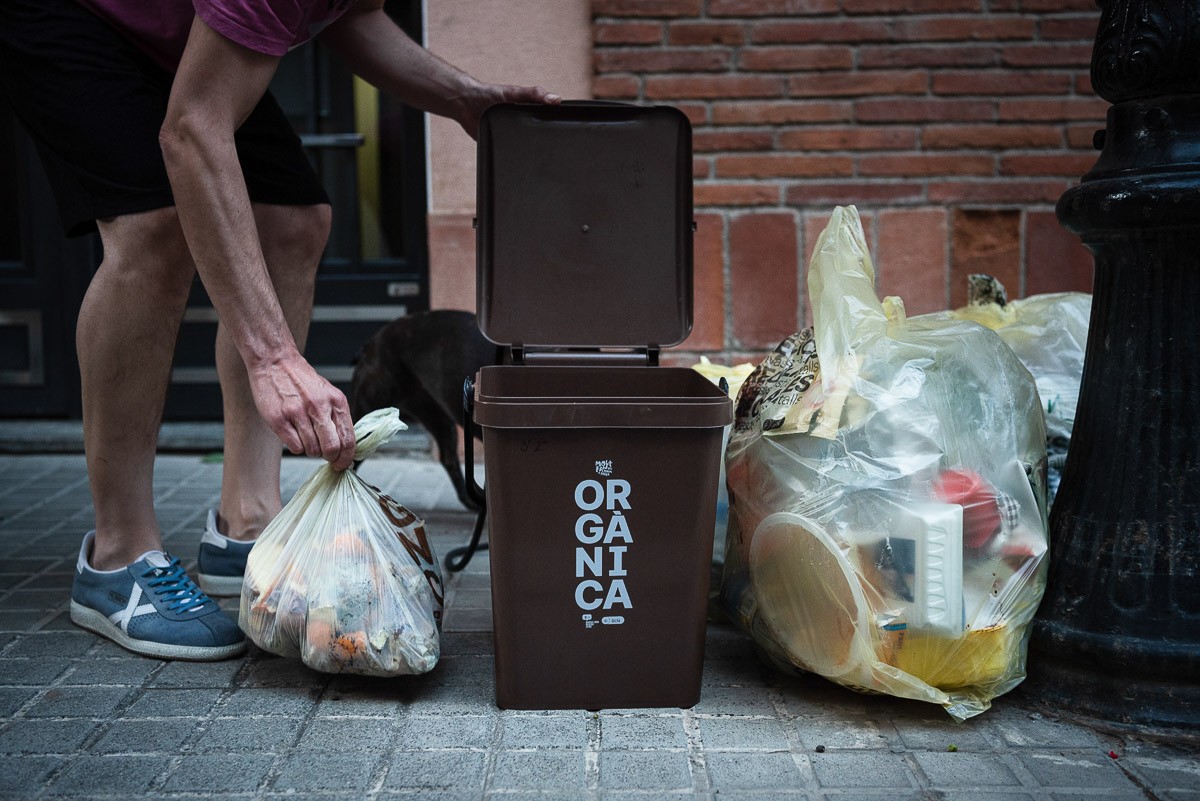Gemma Nohales and Mike Stinavage
Although another country has touched down on the moon this week, down to earth issues like waste management continue to struggle to get off the ground of this planet — let alone reach another.
An advancement in the world of waste is the EU’s recent mandate for the separate collection of bio-waste across all its Member States (MS). The excitement, however, must be tempered with reality.
Bio-waste is the key to achieving recycling targets in the Waste Framework Directive and the landfill diversion targets in the Landfill Directive. Since bio-waste is the largest single stream of municipal waste, efficient and sustainable management is necessary to reach these targets. Bio-waste management is a cross-cutting driver with ramifications in many sectorial policies.
There is still significant distance between where we are and where we would like to be. Only some EU regions and MS have taken action to implement bio-waste collection and treatment as identified in the figure 1, guided by the requirements to meet the targets mentioned and incentivised by the landfill and incinerator taxes and complementary landfill bans [*].
Figure 1. Overview of applied instruments and waste management results in the EU [**]  Source: “Economic instruments and separate collection systems — key strategies to increase recycling ” [1].
Source: “Economic instruments and separate collection systems — key strategies to increase recycling ” [1].
As shown in figure 2, there are varying levels of implementation and generally low outcomes in terms of bio-waste capture (especially for kitchen waste) in Europe. Related to this fact, only 7 MS, from the 27, fully accomplished the 2020 recycling targets. According to 2nd Early Warning Report [2], only 9 MS [***] are on track to meet 2025 recycling targets.
Figure 2. Captures of bio-waste and food waste in the EU 27, in proportion to the theoretical potential Source: “Adapted from Bio-waste generation in the EU: Current capture levels and future potential”[3].
Source: “Adapted from Bio-waste generation in the EU: Current capture levels and future potential”[3].
The 2020 and 2025 recycling objectives still include bio-stabilized waste obtained from the residual fraction. Once the recycling calculation excludes this flow beginning in 2027 [4], the final rates will be significantly affected.
That said, a few actions have been implemented to prepare for the new obligation to separately collect bio-waste that entered into force on 31 December 2023 according to Art. 22 of Waste Framework Directive [4].
Overall, the scenario is not optimistic. In many areas, bio-waste management is in its infancy. Even advanced MS in bio-waste management do not fully comply with the 2024 obligation across all their municipalities. While collection systems may exist, in many cases the capture rate and the quality of separately collected material must be improved, especially for food waste.
Now that the mandate is in place, it has yet to be seen which strategies and advances will be carried out. Nonetheless, there exists many bottlenecks and barriers that prevent bio-waste management from reaching its full potential. Acutely worrisome is the adoption of inadequate collection and implementation strategies especially among regions and MS with less experience. The measures that have limited ability to reach high service coverage, participation levels, and quality of the output will not fully satisfy the EU mandate nor the EU objectives.
Progress in quantity must go hand in hand with quality. One of the essential conditions is low levels of impurities (physical contaminants) and other types of contaminants since this guarantees the production of quality compost and digestate, thereby closing the bio-waste loop and counting bio-waste flows towards the recycling targets.
The first steps towards high-quality recycling are proper separation at the source and efficient individualized models that allow the direct control of the quality.
The LIFE BIOBEST project—incidentally the project that we coordinate—proposes the following core lines of action to improve quantity and quality of bio-waste managed across EU:
- Close the gaps in and advance the regulatory framework,
- Promote and align economic incentives and funding,
- Extend the network of expert stakeholders across all levels of governance,
- Improve technical know-how and validation of best practices,
- Increase communications, public education and awareness,
- Implement efficient and individualised models (that identify the user and allow controls of the collected material) and monitor performance.
Among initial priority actions are:
- Planning bio-waste management deployment and improvement at local and regional levels,
- Planning bio-waste treatment facilities and provide funding,
- Provide guidelines on the efficient models and recommendations for proper operations,
- Monitoring of bio-waste implementation and results.
For the full list of priority actions and recommendations, LIFE BIOBEST Policy Brief will soon be uploaded here.
Advancements in the sector must be led by the European Commission and coordinated by the MS. It will require cross-examining modalities and the inclusion of multi-disciplinary expertise – not necessarily the expertise of astro-physicists and aerospace engineers, but of politicians, technicians, civil servants, private actors, civilians, etc. dedicated to getting bio-waste management off the ground.
Bio-waste management, too, deserves its moment in the limelight. It requires the commitment and participation not of a few, but of all.
References
[1] European Environment Agency (2023), Economic instruments and separate collection systems — key strategies to increase recycling, 2023. Available at: https://www.eea.europa.eu/publications/economic-instruments-and-separate-collection–
[2] European Commission (2023), European Commission Early Warning Report. Available at: https://environment.ec.europa.eu/publications/waste-early-warning-report_en–
[3] Favoino, R. and Giavini, M. (2020), Bio-waste generation in the EU: Current capture levels and future potential. Available at: https://zerowasteeurope.eu/wp-content/uploads/2020/07/2020_07_06_bic_zwe_report_bio_waste.pdf–
[4] Directive 2008/98/EC of the European Parliament and of the Council of 19 November 2008 on waste and repealing certain Directives, Official Journal of the European Union L 312/3, 22.11.2008. Available at: https://eur-lex.europa.eu/legal-content/EN/TXT/?uri=CELEX%3A32008L0098
—
[*] MS with landfill bans: Belgium, Estonia, Hungary, Lithuania, Luxembourg, the Netherlands, Slovakia (from 2024), Slovenia, Czechia, Denmark, Finland, Sweden, Austria, Germany, Poland, Cyprus, France, Malta, Latvia[1].
[**] According to technical note accompanying the briefing ‘Economic instruments and separate collection – key instruments to increase recycling’ [1], convenience collection systems for Bio-waste are referred to doo-to-door collection schemes. The levels of coverage are defined as follows: >= 80 % of the population is characterised as ‘high share of the population’, 50-80 % is characterised as ‘medium share of the population’ and < 50 % is characterised as ‘low share of the population’.
[***] Austria, Belgium, Czechia, Denmark, Germany, Italy, Luxembourg, the Netherlands and Slovenia.

